High Myopia and related sight threatening complications
What Is High Myopia?
Should I Be Concerned About High Myopia?
Yes! High myopia increases the risks of sight threatening eye diseases exponentially, and the risk increases with the severity of myopia. In fact, complications specific to high myopia are one of the leading causes of blindness in the world. These disease include glaucoma, cataract, retinal detachment, and various conditions affecting the macula, which is the central part of the retina responsible for sharp vision, such as macular degeneration, macular hole, foveoschisis (splitting of the retinal layers) and myopic choroidal neovascularisation (growth of abnormal blood vessels underneath the macula).
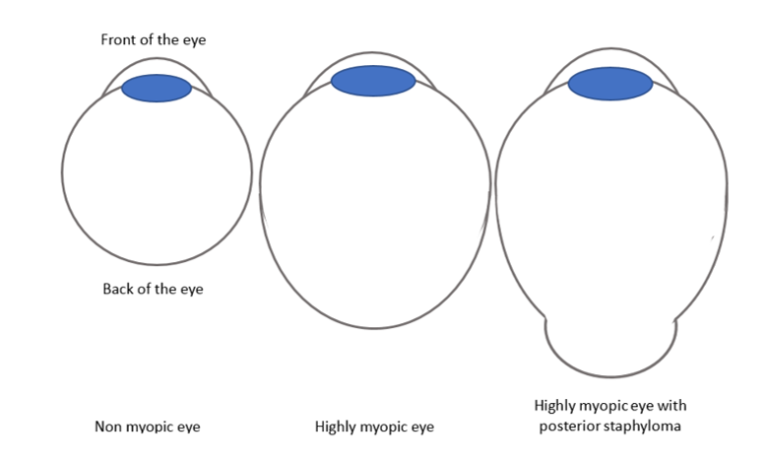
I Had My High Myopia Corrected By LASIK, Glasses Or Cataract Surgery. Am I Safe From The Sight Threatening Complications Of High Myopia?
You are still at risk of these complications. The excessive length of the eyeball in high myopia is the main reason for these complications, and is not corrected by LASIK, glasses or cataract surgery.
What Are The Symptoms To Look Out For?
High myopes should seek an eye examination should they experience a sudden increase of floaters, onset of flashes, distortion of central vision (metamorphopsia), decrease in vision or worsening myopia in adulthood. However, there may not be any symptoms in early stages of disease.
How Often Should I Get My Eyes Checked If I Have High Myopia?
Because early stage disease may have no symptoms, highly myopic individuals should consider eye screening for complications related to myopia. It is especially important to be aware of the potential sight threatening complications of myopia and to seek early treatment should these symptoms occur.
Complications Specific To High Myopia
Myopic macular degeneration and Myopic Choroidal Neovascularisation (CNV)
Myopic macular degeneration is a condition seen in individuals with high myopia, in which there is degeneration of the macula with thinning of the retina and underlying blood supply. Patients with myopic macular degeneration may notice a drop in contrast sensitivity and darker vision in the early stages. Over time, this condition can lead to irreversible loss of vision.
Myopic CNV is a condition whereby abnormal blood vessels grow and bleed beneath the macula, causing blurred or distorted central vision. This condition is potentially blinding if not treated early or adequately. Multiple eye injections may be required to treat this condition.
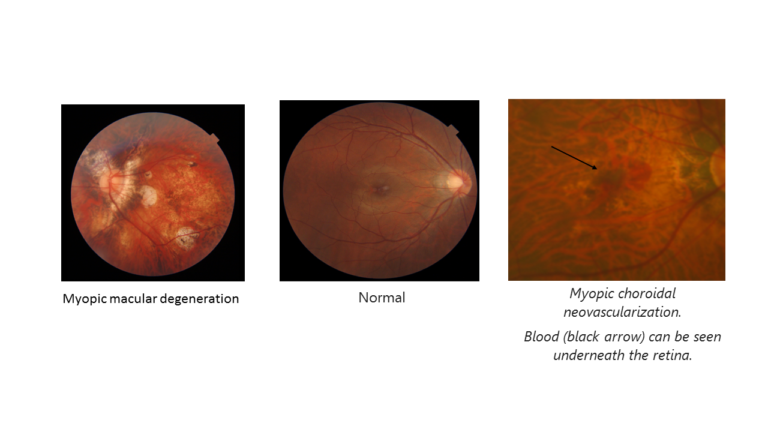
Myopic Foveoschisis and macular hole This is another condition specific to high myopes, in which the excessive length of the eyeball results in stretching and splitting of the retinal layers in the macula. This condition requires regular monitoring as it may progress rapidly and lead to blindness if left untreated. Surgery may be required for patients with worsening vision. When a hole forms at the macula, vision is significantly affected and may lead to irreversible visual loss if left untreated. Common complains include sudden blurring or distortion of vision. Early surgery is often required to prevent irreversible loss of central vision.
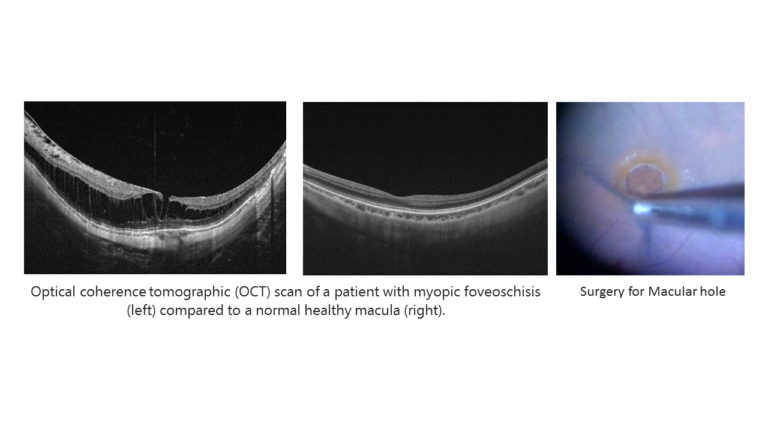



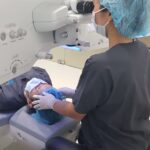
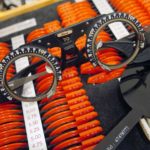
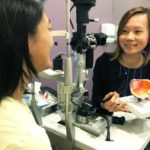

Technology
ISEC believes in continuous innovation, we regularly update our medical technology according to the latest industry developments.
Touch
Rest assured in the hands of experienced doctors with many years of surgical experience, as well as seasoned nurses and optometrists.
Trust
ISEC’s reputation is one that has been built around experience and trust, as evidenced by our large pool of referral patients.
